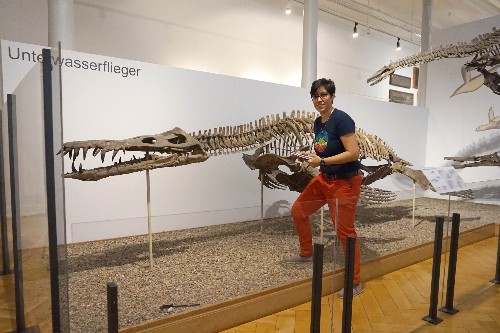The diverse swimming techniques of the ancient reptiles that ruled the Mesozoic seas have been revealed for the first time by scientists at the University of Bristol.
Some of the most extraordinary body transformations in evolution have occurred in animals that adapted to life in water from land-living ancestors, such as modern whales, turtles and seals. During the Mesozoic, from 252 to 66 million years ago, while the dinosaurs stomped about on land, many groups of reptiles took to the seas, such as the iconic ichthyosaurs, plesiosaurs, crocodiles and mosasaurs.
In a new paper, published in the journal Palaeontology, a Bristol team of palaeobiologists used state-of-the-art statistical methods to perform a large-scale quantitative study, the first of its kind, on the locomotion of Mesozoic marine reptiles.
The researchers collected measurements from 125 fossilised skeletons, and used these to explore changes in swimming styles within lineages and through time, discovering that there was no explosive radiation at the beginning of the Mesozoic, but a gradual diversification of locomotory modes, which peaked in the Cretaceous period.
Lead author Dr Susana Gutarra of Bristol’s School of Earth Sciences said: “Changes in anatomy in land-to-sea transitions are intimately linked to the evolution of swimming. For example, sea lions’ flippers have relatively short forearm and large hands, very different from the walking legs of their ancestors. The rich fossil record of Mesozoic marine reptiles provided great opportunity to study these transitions at a large scale.”
Co-author Beatrice Heighton, said: “We included measurements from living aquatic animals, such as otters, seals and turtles, of which we know their swimming behaviour. This is very important to provide a functional reference for the ancient species, with unknown swimming modes.”
In the aftermath of the end-Permian extinction, about 250 million years ago, various groups of reptiles became aquatic hunters, populating the early Mesozoic seas.
Co-author Dr Tom Stubbs said: “After this devastating event, there was a gradual diversification of locomotory modes, which contrasts with the rapid radiation described previously for feeding strategies. This is fascinating because it suggests a ‘head-first’ pattern of evolution in certain lineages.”







